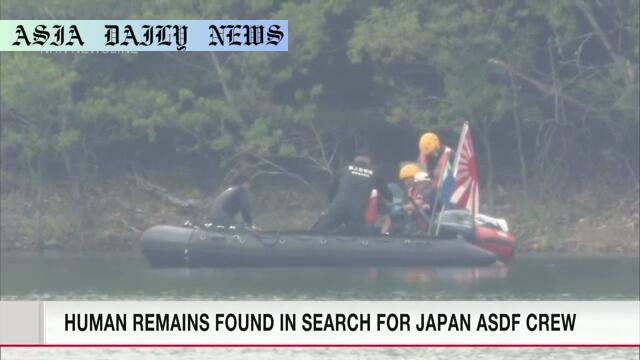Aircrew Remains: Japan Air Self-Defense Force uncovers apparent remains at crash site.
Key Point 1: Aircrew remains and T-4 parts were recovered from Lake Iruka.
Key Point 2: Investigations are underway to analyze the crash causes.
Key Point 3: The crash occurred after the T-4 sharply lost altitude post-takeoff.

Tragic Crash of T-4 Aircraft
The Japan Air Self-Defense Force (ASDF) recently made a harrowing discovery following the crash of its T-4 trainer aircraft into Lake Iruka, located in central Japan’s Aichi Prefecture. This incident took place shortly after the aircraft had departed from Komaki Air Base, sparking immediate search operations to locate both the aircraft’s wreckage and its crew. Sadly, apparent remains of the aircrew members onboard were found during these recovery efforts, confirming the gravity of the accident.
What Happened at Lake Iruka?
The T-4 aircraft reportedly suffered a sharp loss of altitude shortly after takeoff, leading to its unfortunate plunge into the tranquil waters of Lake Iruka. Search and recovery efforts quickly mobilized, with the ASDF spearheading the operation to locate debris and the missing aircrew. By Thursday, parts of the aircraft fuselage and what is presumably its engine were recovered from the site, aiding investigators in piecing together the sequence of events leading to the crash.
Discovery of Apparent Human Remains
In a sobering turn of events, the ASDF announced on Friday that they had discovered what appeared to be partial human remains near the crash site. Early indications suggest that these remains belong to the two crew members aboard the ill-fated aircraft. The remains have been transported to Komaki Air Base for further identification and analysis, a necessary step to confirm their origin and provide closure to families and colleagues of the deceased.
Investigating the Root Cause
While the physical recovery of debris from the crash is progressing, the ASDF has emphasized the importance of a thorough analysis of the wreckage. Understanding why the T-4 plane experienced such a sudden descent after takeoff is critical. Early assessments will likely focus on potential mechanical malfunctions, pilot error, or external environmental factors such as weather. It remains vital to identify any preventable causes to minimize future risks for Japan’s fleet of trainer aircraft.
Safety Measures Moving Forward
This tragic accident sheds light on the inherent risks associated with aerial operations, particularly during training missions. The ASDF has often been recognized for its stringent safety standards, and this incident is likely to prompt a renewed focus on their protocols. The findings of this investigation may lead to significant safety reforms, ensuring such incidents are less likely to occur in the future. At the core of these efforts will be enhanced crew training, rigorous maintenance schedules, and robust risk assessment during flight operations.
Impact of the Crash
Beyond the immediate tragedy and loss of life, this incident serves as a stark reminder of the sacrifices made by members of Japan’s armed forces. Flying military aircraft, even in training missions, involves significant risk. The dedication shown by these service members underscores their commitment to national defense, and their loss reverberates across the military community and the nation at large.



Commentary
A Tragic Reminder of Risks in Military Aviation
Military aviation embodies both extraordinary precision and inherent risks. The recent crash involving the Japan Air Self-Defense Force’s T-4 trainer aircraft highlights the perils faced by military personnel, even during routine training operations. The sudden loss of altitude leading to the crash underscores the unpredictable nature of air travel and the high stakes in ensuring both safety and mission readiness. This tragedy reminds us of the challenges faced by those who dedicate their lives to national defense.
The Complexity of Investigating Aircraft Crashes
Aircraft accidents, such as the T-4 crash, require meticulous investigations to piece together what unfolded. From analyzing mechanical components like the recovered engine to understanding pilot decisions and environmental conditions, every detail matters. Such investigations serve dual purposes: finding closure for families and informing long-term safety protocols. The discovery of key wreckage components increases the likelihood of achieving a detailed understanding of the incident, giving hope for preventing future losses.
The Human Cost and the Path Forward
While the technical aspects of this crash command attention, it is essential not to overlook the human component. The apparent recovery of crew remains is a somber but necessary step toward offering closure to the loved ones of those who perished. It also puts into focus the risks and sacrifices inherent in military service. Honoring their memory involves not just mourning their loss but also taking proactive steps to ensure heightened safety measures for future training missions across Japan and beyond. Such tragedies, though painful, often lead to advancements that save lives in the future.
Lessons and Legacy
Ultimately, the T-4 crash is a grave reminder of the risks inherent in defending a nation. By committing to rigorous analysis and continuous improvement, the Japan Air Self-Defense Force can honor the legacy of those lost by working tirelessly to improve safety. The pain of this loss is tangible, but it also serves as a driver for collective reflection and meaningful action.